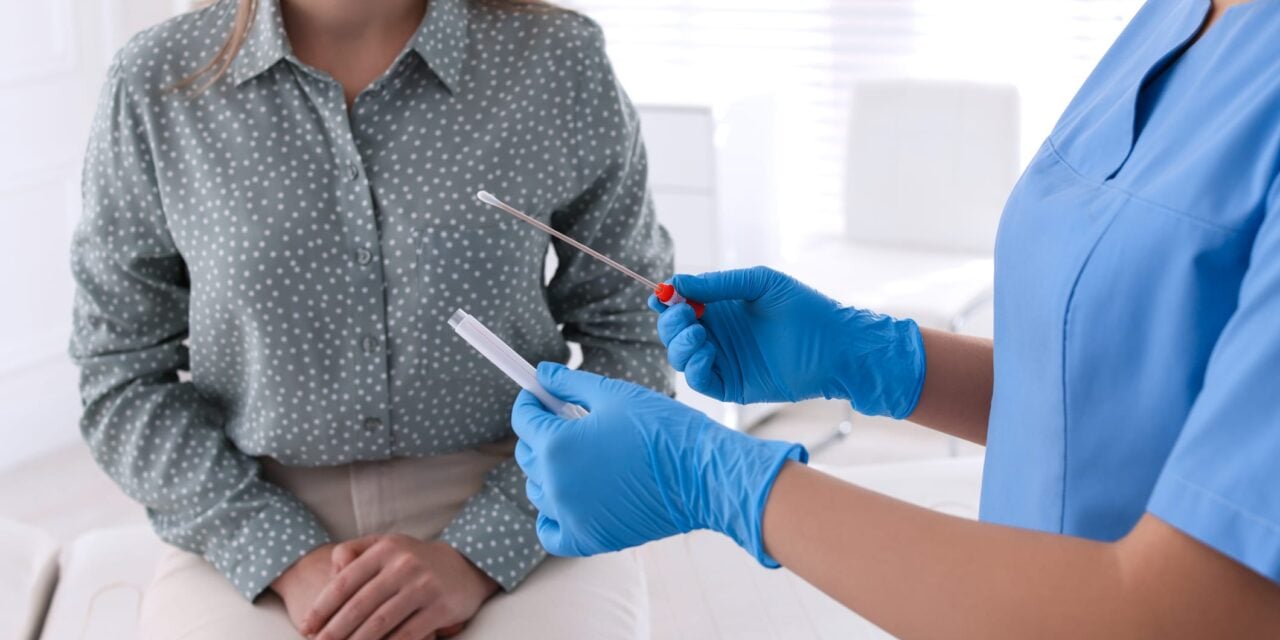Self-collection for HPV and other infections offers a more convenient, private way to complete recommended screenings—helping reach women who might otherwise delay or skip care.
By D. Alagia III, MD, MS, MBA, FACS, FACOG, Quest Diagnostics
Cervical cancer screening is among the best tools we have to save lives. Over the last 50 years, Pap and HPV tests have been shown to dramatically reduce new cases of cancer—and deaths from the disease—among women in the United States.
Unfortunately, compliance with these recommended-by-experts screenings is declining. Since 2005, the percentage of women overdue for their screening has grown. In 2019, missed screenings had reached an alarming rate of 23%, meaning nearly 1 in 4 women eligible for cervical cancer screening have not been tested.
Why Are Women Not Getting to the Doctor?
In 2019, the National Health Interview Survey aimed to dig into the issue and learn more about potential reasons for the decrease in screenings over time. First, a large majority of women (60%) cited not knowing they needed screening as a reason for being overdue. This was the most common response among all groups and ethnicities surveyed.
Most interestingly, responses from the survey were compared to responses received in 2005. At that time, lack of access was the second most common response at 22%. Since then, only 10% of respondents cited lack of access as a reason they did not receive screening.
Unfortunately, the COVID-19 pandemic likely worsened the situation documented in this survey. Data from Quest Diagnostics published in 2021 showed cancer diagnoses declined sharply during the first year of the pandemic, likely due to individuals delaying preventive or other forms of medical care, like routine screenings. By 2022, diagnoses of the most common cancers, including cervical, had still not returned to pre-pandemic levels.
As a former practicing OB/GYN, I suspect one reason rates of screening have declined is because of confusion about the guidelines. In the past, women were typically screened annually using Pap, or by co-testing, which provides the doctor with results of HPV and Pap testing. But in recent years, guidelines have become more nuanced. Gone are the days of annual screens; intervals today range from three to five years for women of average risk over age 30.
Plus, there are more test options, with HPV primary joining co-testing and Pap. One must wonder if the average woman—who may be raising a family, if not also holding down a job and household—can keep on top of when to be screened under these circumstances.
Additionally, for many, it can be difficult to get an appointment at their doctor’s office. Since the pandemic, physician wait times have skyrocketed, with a 2022 report measuring average wait times for new patient appointments across 23 US metros showing 38 days. Couple this with the fact that only 34% of consumers aged 25-34 prefer an in-person doctor’s visit to that of a virtual visit, and it’s no surprise that younger women at risk of developing cervical cancer are opting to skip care entirely.
While seeing a doctor is still extremely important, changing demographics in the healthcare system are bringing new needs from patients seeking alternate solutions for care.
How Can We Improve Guideline-based Screening?
So, how can we ensure patients are getting screened appropriately and that precancer or cancer is caught at its earliest stages? Traditional methods, like electronic or mailed reminders clearly aren’t enough to ensure women are screened. Many healthcare providers have begun exploring ways to meet patients where they are. Given what we know about primary care appointments, finding ways to make screening easier has been critical.
One new solution that has potential to increase adoption is self-collection. This has been effective for both genital tract infections (GTIs), such as chlamydia, gonorrhea, trichomoniasis and Mycoplasma genitalium, and for human papillomavirus (HPV), which can lead to the development of cervical cancer.
There are a number of reasons patients may opt to self-collect. The pap smear, which has been the standard screening method for HPV and cervical cancer for decades, can be uncomfortable and unpleasant for many women. Some women may prefer self-collection for religious or cultural reasons, or due to sexual trauma. These collections must still be done in a health care setting, like a primary care office or other patient service center, but can be more private.
Another key advantage is speed: Self-collection allows a woman to collect a specimen and send it to a lab before she meets with her physician to discuss the findings and treatment. Speed to treatment is a major advantage when a woman is in pain or discomfort.
Quest implemented self-collection options for GTIs in late 2024 and for HPV in early 2025, leveraging our 2,000 patient service centers, and we’ve been impressed by the rate of adoption. Of course, self-collection is not a replacement for clinical evaluation. Yet, self-collection may increase access to screening for women who are not getting screened, particularly for those in rural areas where individuals may not be able to access a regular healthcare provider.
However, this is only the first step in the process as, if a screening test detects abnormal or cancer-causing cells, a follow-up visit to a provider and, later, treatment may be necessary.7 Providers can potentially lose patient engagement at any step in this process.
Final Take
As an OB/GYN, I have had the great opportunity to diagnose cervical disease and cervical cancers in their early stages, which resulted in saving the lives of many. I have also cared for patients whose cervical cancer was not identified in the early stages due to gaps in screening or to lack of access, with outcomes often being a tragic death—which, in many cases, was avoidable.
The sad reality is that, in the United States, over 4,000 women die of cervical cancer every year. This number has essentially remained unchanged for over a decade. However, if we as a health care community and society continue to raise awareness around the importance of screening, and provide resources and access to support self-collection, we can continue to close gaps in care across social, economic and geographic divides.
In doing this, we will be empowering women to more fully engage in their health care through screening and early disease detection with the ultimate goal of improving their health and well-being.
About the author: Alagia is the senior medical director for advanced diagnostics and Women’s Health for Quest Diagnostics. Alagia is a board-certified obstetrician and gynecologist and a fellow of the American College of Surgeons and the American College of Obstetrics and Gynecology. He is a graduate of Georgetown University College and Medical School and holds Master’s degrees in business and finance from The Johns Hopkins University.
Note: Self -collection is not a substitute for visits to a healthcare provider. Patients should not use test results to start, stop, or change any course of treatment unless advised by their healthcare provider. Self-collection is not for everyone. A clinician will need to collect a sample if a patient is unable to self-collect. A sample should not be self-collected if the patient is pregnant, has recently undergone gynecological surgery, or has unusual bleeding or pelvic pain.
ID 240283191 © Chernetskaya | Dreamstime.com






Such an insightful article! It’s great to see how self-collection for HPV and infections is making women’s health screenings more private, convenient, and accessible. This approach can truly help reach those who delay care and improve early detection of cervical cancer. Empowering step toward better women’s healthcare!